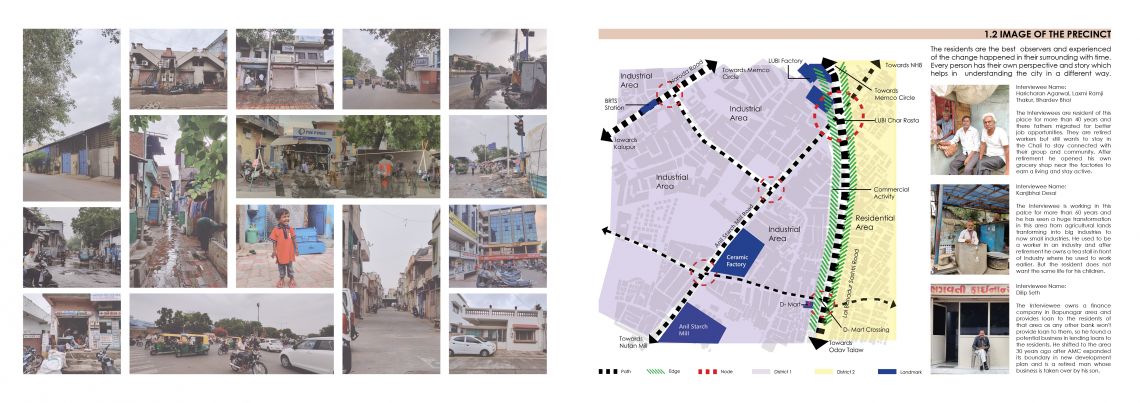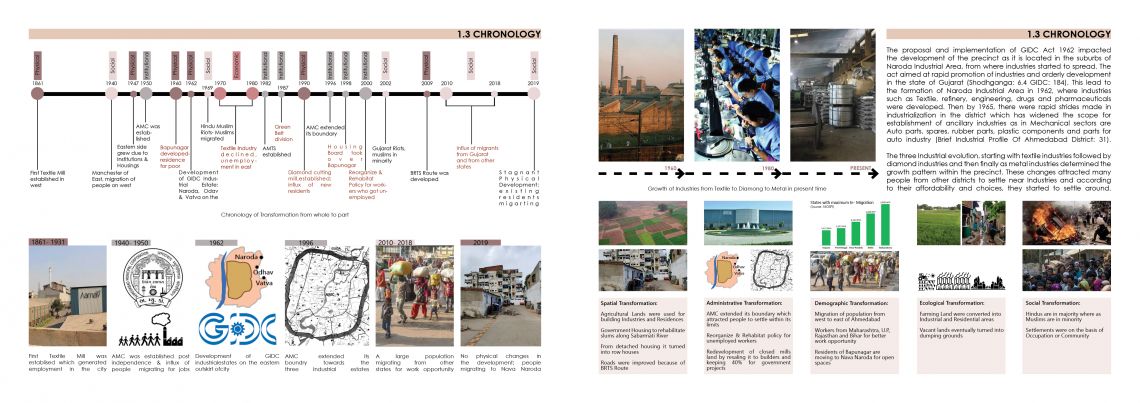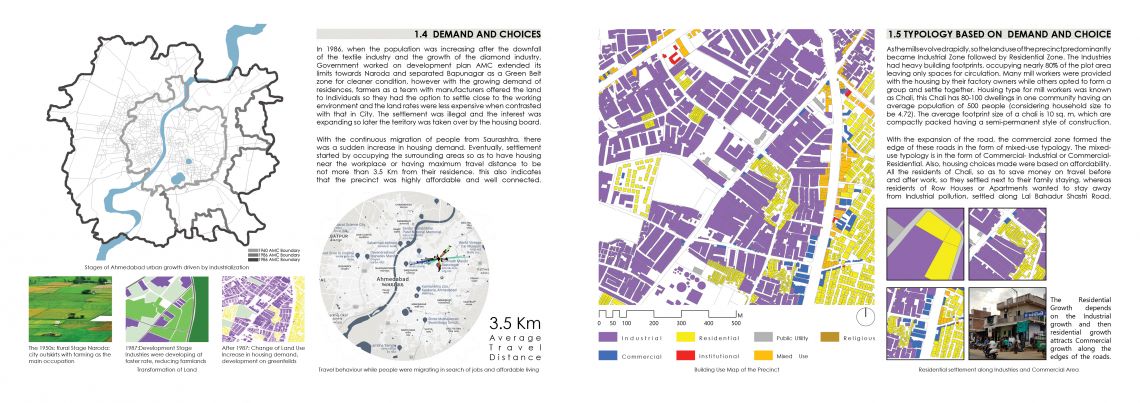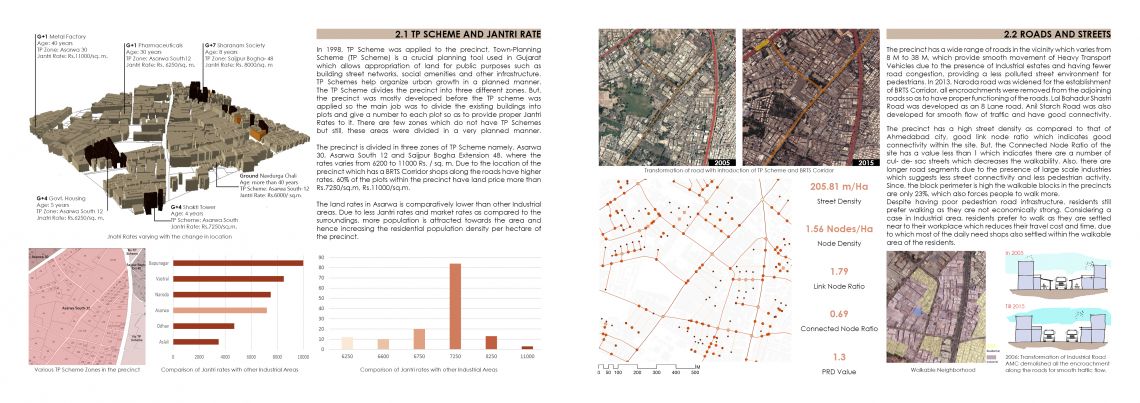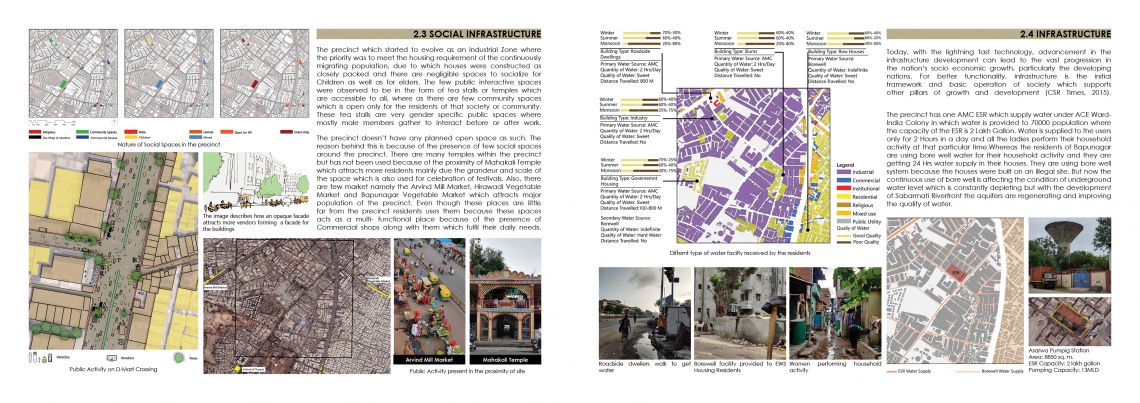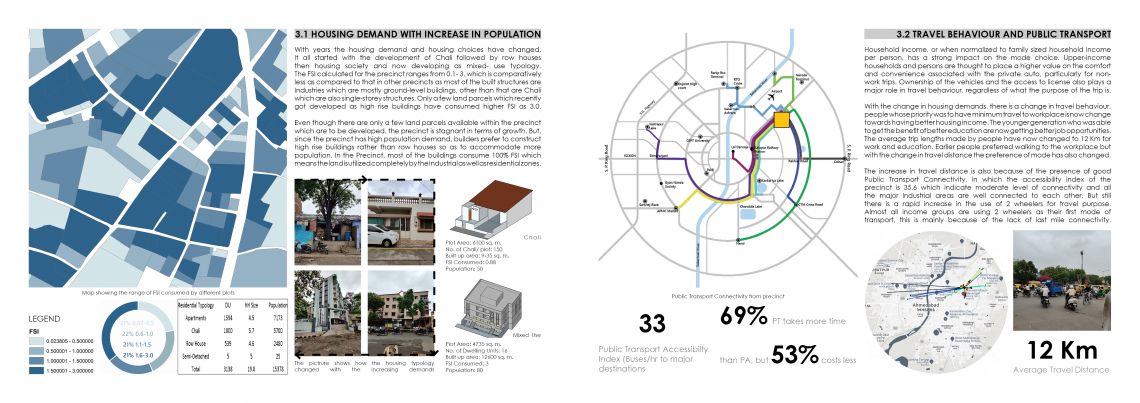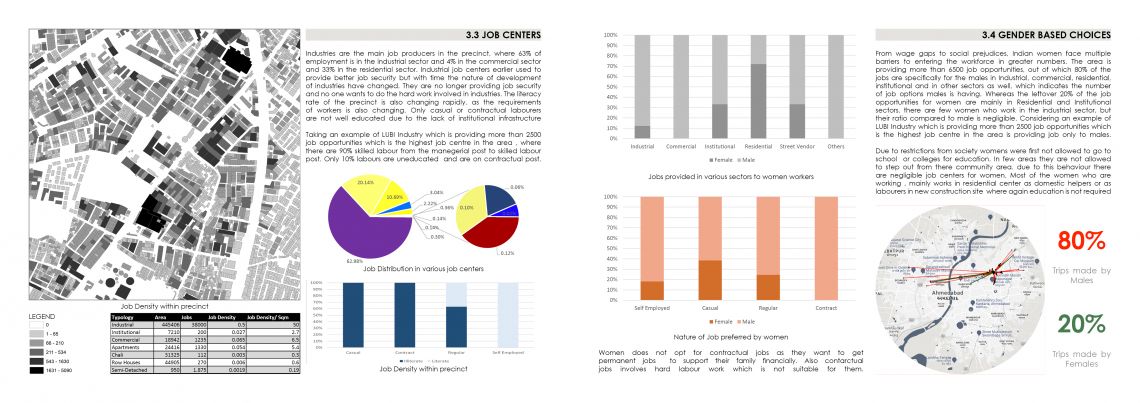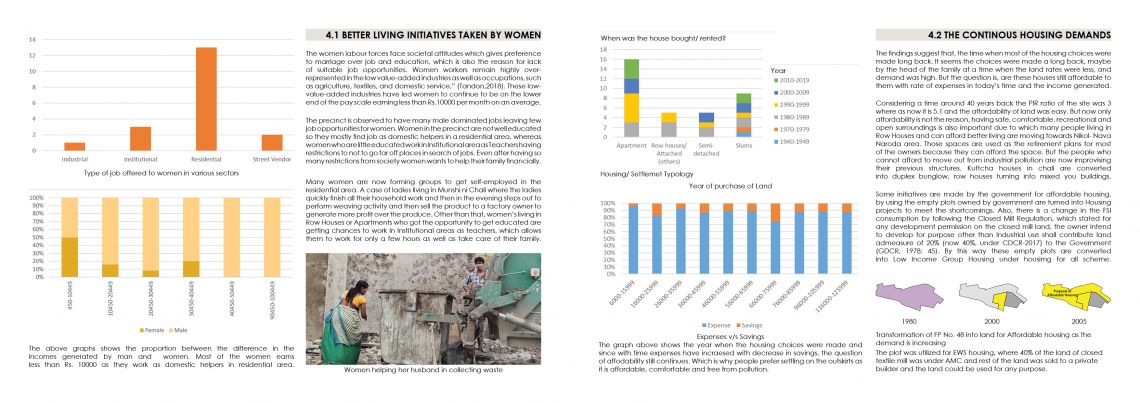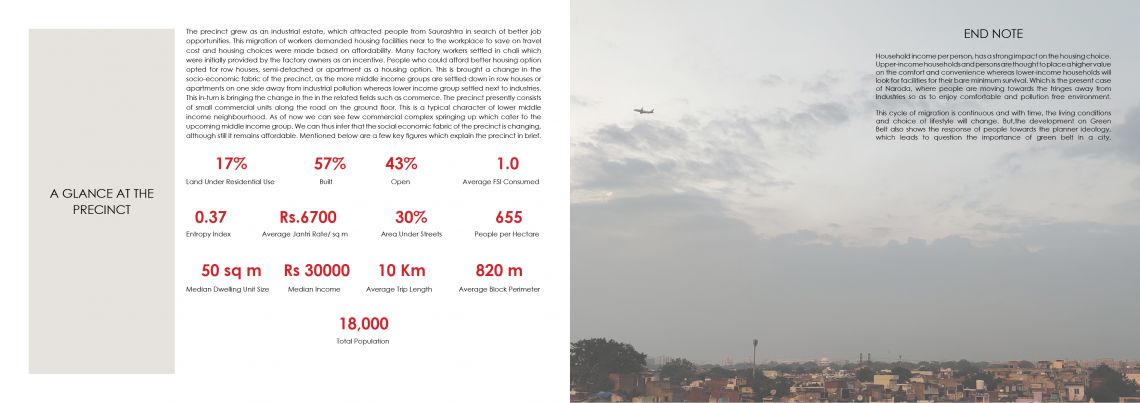Your browser is out-of-date!
For a richer surfing experience on our website, please update your browser. Update my browser now!
For a richer surfing experience on our website, please update your browser. Update my browser now!
Gordon Cullen in his book 'The Concise Townscape' explained that Townscape is a visual art contained in the arrangement of buildings, roads, trees, nature and urban environment that decorates the space, it is one way to recognise the physical form of a city. Considering the area located in the suburbs of Naroda Industrial Area, which started developing post-independence, when the major focus was drawn towards the rapid promotion of industries and orderly development in the state of Gujarat (Shodhganga,6.4 GIDC,184). During this period many textile mills were established which influenced the growth of the precinct. The precinct grew as an industrial estate, which attracted people from Saurashtra in search of better job opportunities, therefore a rapid increase in the demanded affordable housing. Many factory workers settled in chali which were initially provided by the factory owners as an incentive. People who could afford better housing option opted for row houses, semi-detached or apartment as a housing option. With time there was a considerable downfall in the factories due to which people had no job security so, people started to search for better job opportunities, educational facilities, etc. as the connectivity improved with the establishment of BRTS and wider roads. Intending to fulfil the housing demand, people tend to build individual houses and no efforts were made in having open and recreational spaces for kids and elders. Now, to enjoy the facilities of parks, recreational spaces, better Infrastructure, people of higher income group have started to plan their retirement free from industrial pollution, they are now settling around the fringes i.e. Nikol and Nava Naroda, whereas people living in Chali who cannot afford land price are improvising their lifestyles.
